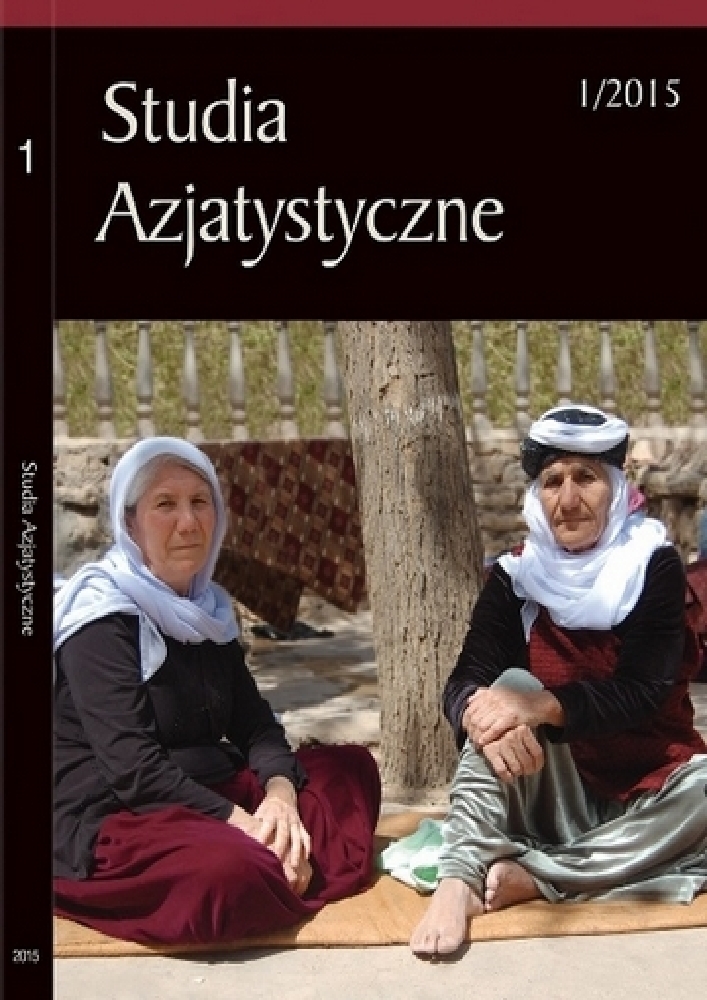Abstrakt
Cinematography can be used as a weapon in the battle for identity. Kurdish people are in a constant need to reinvent their national identity. Some of them use cinema as a tool to tell their stories in order not to be forgotten. One of them – a critically acclaimed director from Iran, Bahman Ghobadi is known especially for his cinematic contribution to the Kurdish issue. The article briefly depicts the history of Kurdish cinema and describes in detail the image of Kurds in Bahman Ghobadi's first four feature films - A Time for Drunken Horses (2000), Marooned in Iraq (2002), Turtles Can Fly (2004) and Halfmoon (2006). All these films are not only great pieces of art, full of symbolic images, but they also contain a complex image of the Kurdish nation. Ghobadi uses his camera to tell stories of small, local communities displaced between Iran, Iraq and Turkey, who struggle to maintain their own culture and dignity.Bibliografia
Dönmez-Colin, Gönül. 2008. Turkish Cinema: Identity, Distance and Belonging. Londyn: Reaktion Books Ltd.
Giedź, Maria. 2002. Węzeł kurdyjski. Warszawa: Dialog.
Jomma, Fuad. 2001. Kurdowie i Kurdystan. Gdańsk: Wydawnictwo L&L i DJ.
Kreyenbrock, Phillip, Christine Allison. 1996. Kurdish Culture and Identity. Londyn: Zed Books Ltd.
Naficy, Hamid. 2001. An Accented Cinema: Exilic and Diasporic Filmmaking. New Jersey: Princeton University Press.
Yıldız, Kerim, Rachel Bernu, Julianne Stevenson. 2010. The Situation of Kurdish Children in Turkey. London: Kurdish Human Rights Project.
Źródła internetowe
Gündoğdu, Mustafa. An introduction to Kurdish Cinema, http://www.academia.edu/3480970/An_Introduction_to_Kurdish_Cinema, dostęp: 17.01.2014.
Kutchera, Chris. 1983. Kurdistan Turkey: Yılmaz Güney's Last Film, The Middle East Magazine,
http://www.chris-kutschera.com/A/Yilmaz%20Guney.htm, dostęp: 17.04.2014.
Kutchera, Chris. 2003. Bahman Ghobadi and the Pain of Giving Birth to Kurdish Cinema, The Middle East Magazine, http://www.chris-kutschera.com/A/bahman_ghobadi.htm, dostęp: 21.10.2014.
Oficjalna strona internetowa Mij Film [organizacji założonej przez Bahmana Ghobadiego i mającej na celu wspieranie kina w Kurdystanie], http://www.mijfilm.com, dostęp 28.08.2014.
Scarlet, Peter. 2007. Kurdish Director, Stuck between Iran and Iraq, New York Times,
http://www.nytimes.com/2007/12/16/movies/16scar.html?_r=1&, dostęp: 17.01.2014.
Sciolino, Eliane. 2000. Filming in Iran’s Rugged Corner, Hoping Prayer Works, New York Times, http://www.nytimes.com/2000/10/26/movies/arts-abroadfilming-in-iran-s-rugged corner-hoping-prayerworks. html?src=pm&pagewanted=1, dostęp: 26.10.2014.
Strona internetowa Central Intelligence Agency,https://www.cia.gov/library/publications/the-worldfactbook/geos/tu.html, dostęp: 30.01.2014.
Strona internetowa Toronto International Film Festival, http://www.tiff.net/festivals/thefestival/programmes/discovery/mardan, dostęp: 28.08.2014.
Filmy
Tablice (tyt. org. Takhte Siah), reż. Samira Makhmalbaf, 2000 r.
Czas pijanych koni (tyt. org. Demek jibo hespên serxweş), reż. B. Ghobadi, 2000 r.
Zagubieni w Iraku (tyt. org. Gomgaštegi dar Arâq), reż. B. Ghobadi, 2002 r.
Gdyby żółwie mogły latać (tyt. org. Kûsî Jî Dikarin Bifirin), reż. B. Ghobadi, 2004 r.
Półksiężyc (tyt. org. Nîwe Mang), reż. B. Ghobadi, 2006 r.
Licencja

Ten utwór jest dostępny na licencji Creative Commons Uznanie autorstwa 4.0 Międzynarodowe.
